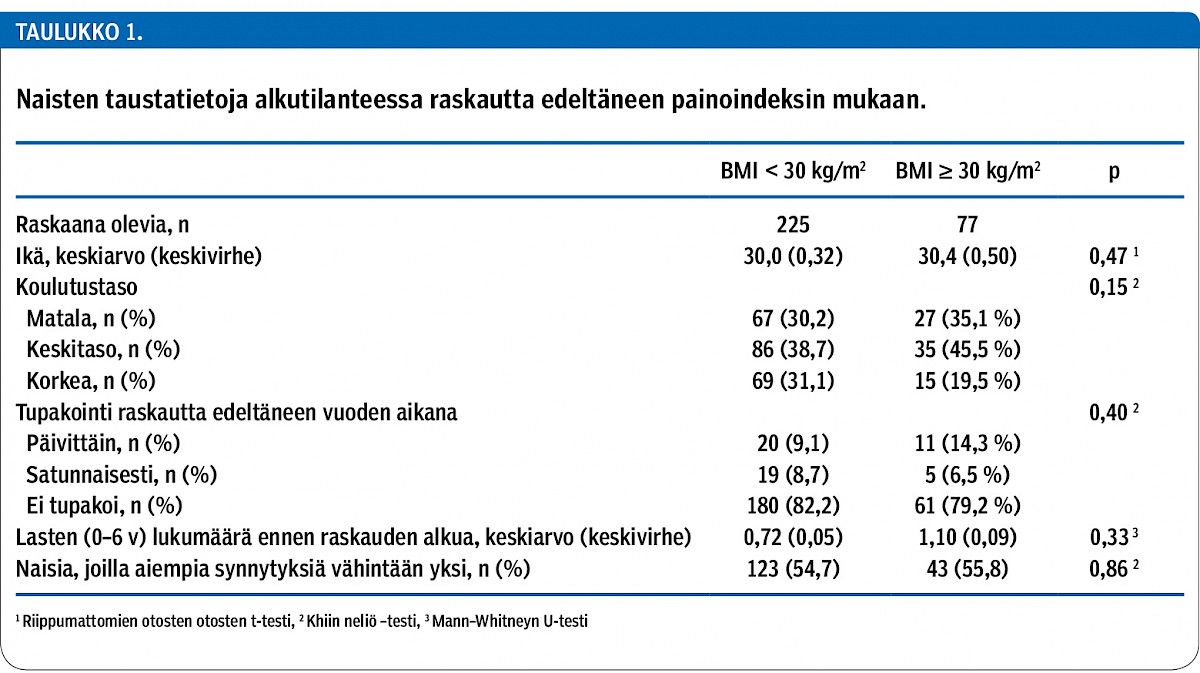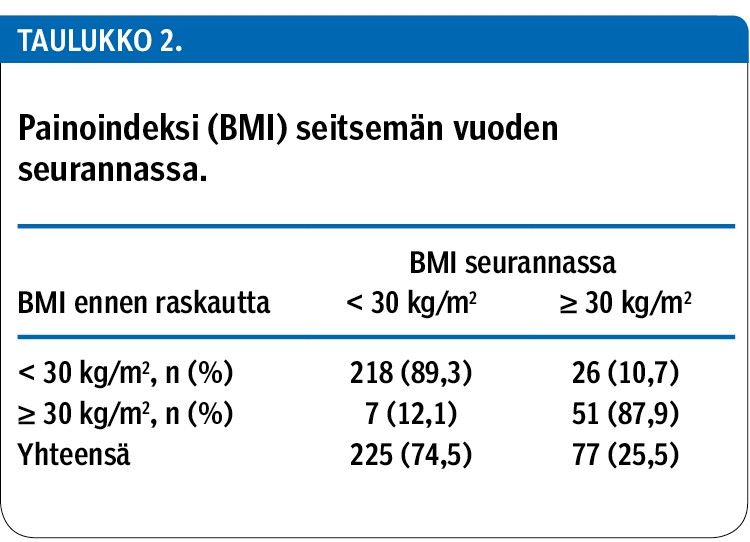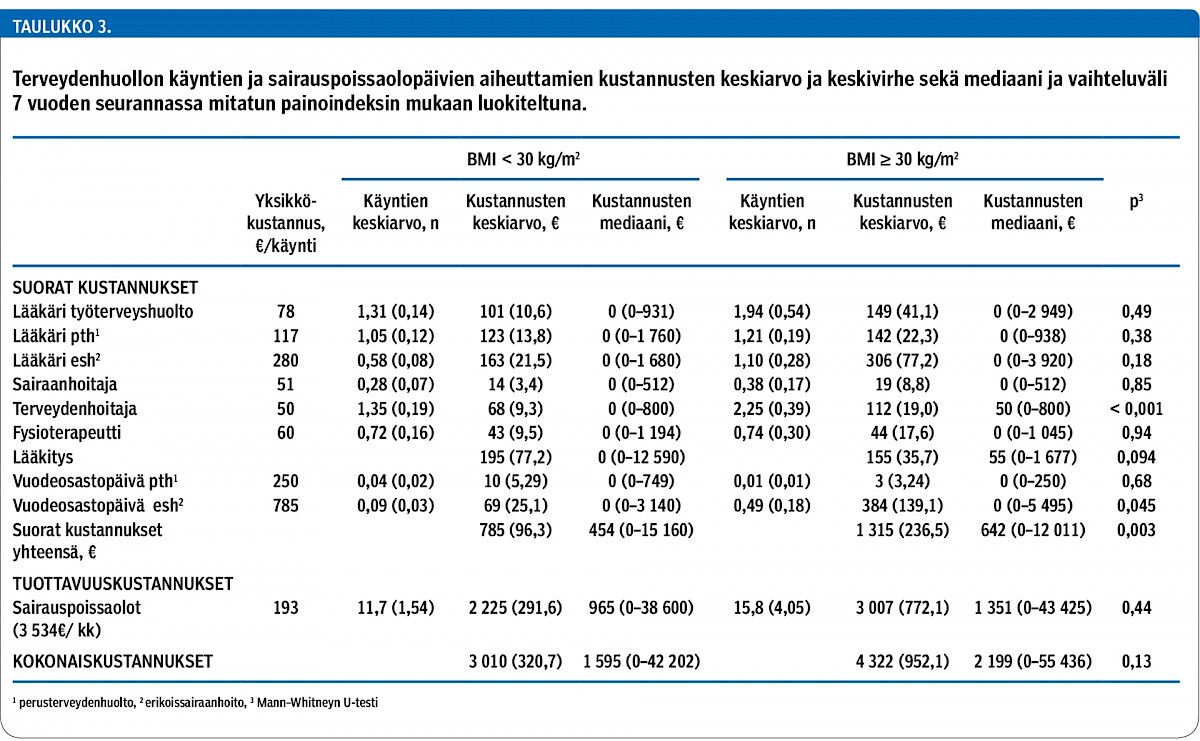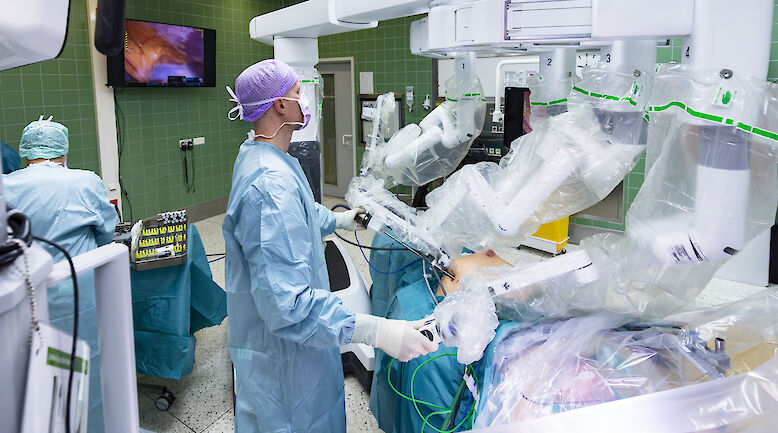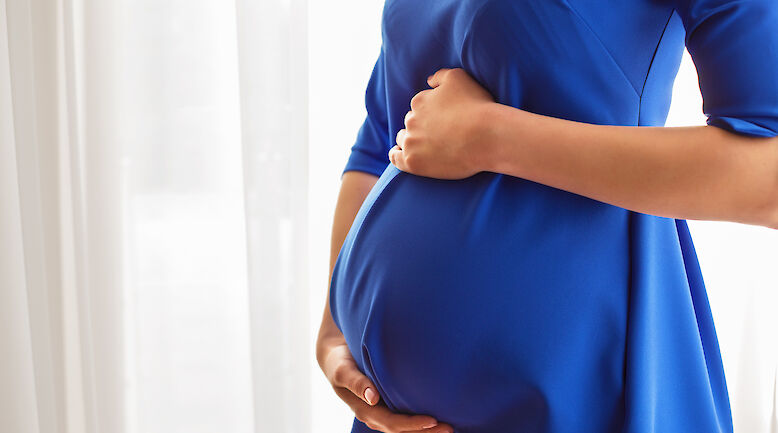Obesity and health care costs seven years after childbirth

Background
Obesity is associated with increased health care costs. There is a lack of recent studies concerning health care costs among obese women of reproductive age. The aim of the study was to evaluate the association between obesity and direct and indirect costs 7 years after delivery.
Methods
The participants consisted of 302 women who participated in a cluster randomized gestational diabetes prevention trial during years 2007–2009. At the 7-year follow-up study, body mass index, blood glucose and insulin levels were measured from both mother and child. Self-reported data were collected on chronic diseases, the use of health services and sickness absence during the past year.
Results
Prevalence of obesity (body mass index ≥ 30) was, at the beginning of pregnancy, 19.2%, and 25.5% at the 7-year follow-up. Direct health care costs for obese women were at follow-up 41.4% higher than in other women (€454 vs. €642, p = 0.003). In terms of indirect costs, there were no significant differences according to the level of obesity. Sensitivity analyses were made by dropping five outliers (z-score of total cost was ≥ 3.30), but the results did not fundamentally change.
Conclusions
Obesity in women of reproductive age is associated with increased health care costs, particularly because of the higher cost of special health care. When preventing obesity more techniques are needed to limit increases in health care costs.
